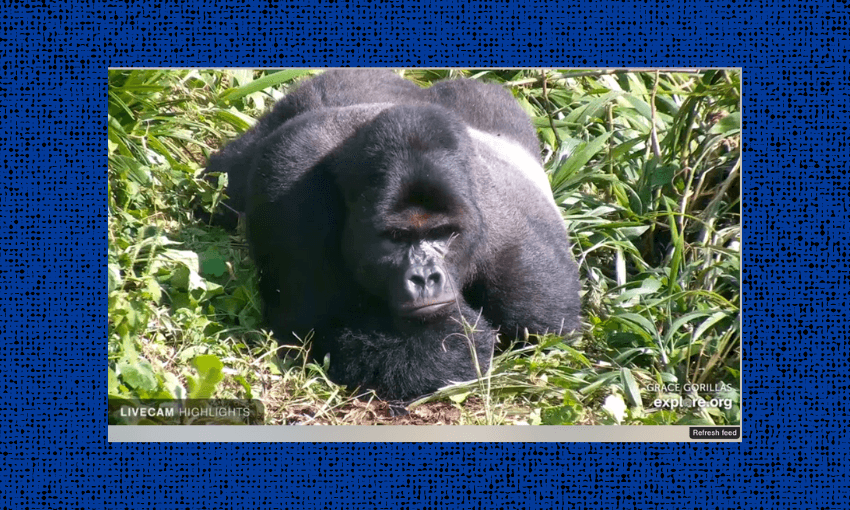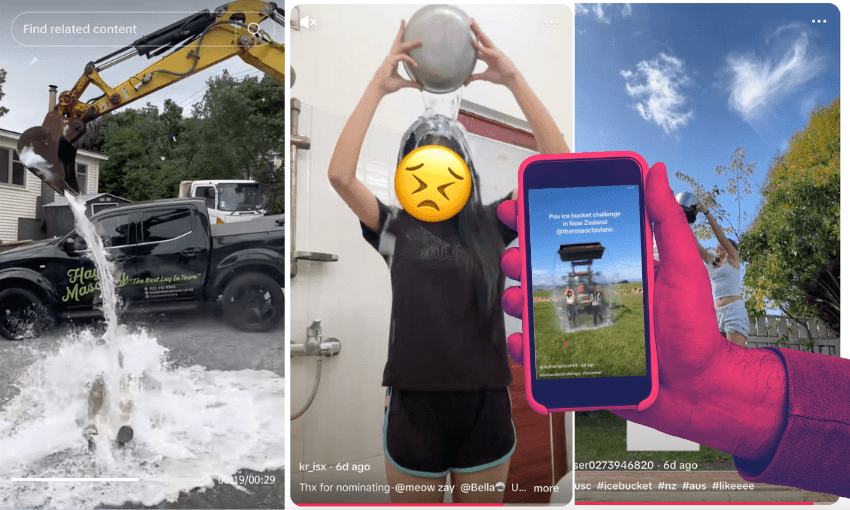Human world getting you down? Here’s a curated list of animal webcams to soothe, entertain and sometimes, unfortunately, remind you of how much help nature needs.
In a chaotic world there is nothing more spiritually refreshing than sinking your eyes into the wilderness. From the gentle sloshing of moose padding through a slow-moving river; to albatross chicks resting fatly in their nests; to a lone egg in a bald eagle’s nest.
Webcams are nestled in prime locations all around the world, allowing us to spy on animals and their wild ways and their wild homes. From the comfort of your office chair you can surveil nature at your leisure and remind yourself of the cute, the curious and the courageous trying to exist out there, beyond you.
A warning that not all livestreams will soothe, exactly: some will remind you just how precarious our wild creatures are and how much support they now need to simply to carry on as they have done for so many generations.
Here is a list of webcams from Aotearoa and abroad for your dose of vicarious wilderness.
Royal Cam – Albatross Livestream
One of the most magnificent examples of the animal webcam is this 24/7 livestream of the albatross at Pukekura/Taiaroa Head in Ōtepoti, Dunedin where the albatross colony is watched over by scientists who help ensure their survival. Even if there were no birds in sight it is magnificent to feast your eyes upon the wind-blown grasses waving between a changeable sea and sky. The camera angle does seem to change quite regularly (or there is more than one camera) so you’re guaranteed a change of scene even if the chicks aren’t so active.
The camera is currently trained on a female chick (poetically named A85) who looks like a fluffy soft toy nestled there in her nest. If you’re lucky you’ll see parents gliding over the head with their huge wings, or even getting up close to the camera.
You can also join the Royal Cam community discussion where watchers post screenshots and other observations: so wholesome.
Orokonui Live Cams – Kākā Cam and Orokonui Valley
Orokonui Sanctuary is nestled between Waitati and Pūrākaunui, about 20km north of Dunedin. The Kākā Cam has its eye trained on a feeding station which is surrounded by forest. To be honest I’m yet to see a kākā but I have spent long, long minutes gazing into the foliage swaying in strong winds and that is better than any lullaby or meditation I have tried yet.
The Valley Cam gazes out towards Māpounui maunga so you look over tī kouka trees, toetoe and other mountainous plants towards a sometimes misty, other times crystal clear rise in the land. Just beautiful.
Kororā Little Blue Penguin nest cam – NIWA
This live cam by the Urban Wildlife Trust is an eye to the inside of the NIWA (The National Institute for Water and Atmospheric Research) kororā nest in Evans Bay, Wellington. You’ll see feathers and twigs, winged bugs, and cockroaches. The latest update below the livestream is from October 2024 and it says:
“Hi All – Firstly thank you so much for watching our Live Kororā Cam. You may already be aware the eggs are now past the max hatch date. Sadly, it looks like another case of infertile eggs, which is becoming more common for this colony. Unfortunately, this just shines a light on the enormity of the adverse environmental impacts these birds are up against. Extreme weather conditions, heavy sediment, lack of food, man-made pollutants and predators are all challenges that the world’s smallest penguin has to contend with every day to survive, let alone successfully bring another generation into the world.”
You might not see any little blue penguins but the empty nest, buzzing with insects, might just remind you that our tiny kororā need all the help we can give them.
Orana Park – Zoolife
To view these you do have to create a Zoolife account (very simple, two-step situation, and free) but once you’re in, oh boy, has the door to spying on zoo animals been well and truly opened.
You can select three zoo cams to watch anytime you like for free – I chose the Siamangs at Orana Park, and the Snow Leopards and Livingstone’s fruit bats at Northumberland Zoo.
What’s nifty about Zoolife is that you can move your camera view around and zoom in and out. I zoomed in on a sleeping Snow Leopard and found the experience both magical and also shocking. For such a famously elusive creature, there she was, on my computer screen, live and totally unaware that me and a bunch of other Zoolife creeps were watching her take a nap.
The Orana Park Siamangs were all hanging out at the opposite end of their playground and the camera was quite slow to zoom in on them. But once it did I was treated to that particularly sly way that primates like to hassle each other. With coy looks and then a random smack on the arm. Delightful. (Also kind of odd sensation to also watch the people at Orana watching the Siamangs, too.)
Warning: one could spend many hours touring Zoolife and the portals into the private (and public) lives of zoo captives.
Auckland Zoo webcams
These videos are not actually live but are highlights taken from past live webcams. So the thrill of the present is not there but I would still highly recommend the meerkat video which opens right on feeding time and there is nothing like a dozen tiny meers, sprinting for the disembodied hand of their keeper, to make your morning.
Puffin Bank Cam – Skomer Island Livestream
Thanks to a hi-tech camera you can now spy on a colony of one of quaintest species of seabird there ever was. Skomer Island is way over in Wales, off the coast of Pembrokeshire. For us down here in Aotearoa the Puffin Bank Cam will largely be on nightwatch. But if you care to tune in early in the morning or later at night you’ll be treated to the small suited birds with bright beaks, severe eyebrows and a fabulous waddle.
Badger Cam – Cumbria Wildlife Trust
What I love about this particular Badger Cam (located in Cumbria, England) is that they’re wild badgers but they’re fed by the staff of a local bar called the Badger Bar & Restaurant.
I’ve never not seen an animal when I’ve tuned into this badger cam. First few times I saw badgers, after that, I saw rats. Great big rats.
Decorah North Bald Eagle cam – Raptor Resource Project
Decorah is in Iowa, and the pair of eagles you’ll see (hopefully) are nesting on a private property that has allowed a 24/7 camera watch over the nest. We just missed fledgling season (March – April) but if you tune in right now you might just see what I see: an egg! A late bloomer? The egg looks a bit smaller than I’d assume for an eagle and there’s no eagle currently sitting on it … but this viewer will be checking in on progress and hoping to see a new baby baldie very soon.
Update: there appears to be more than one camera view. You may also tune in to find a wider angle view of the nest against the rural backdrop which may hopefully reveal the eagles flying in and out. At the very least you’ll be able to gaze a while at a thick blanket of cloud racing above the land.
Gorilla Forest Corridor – GRACE Gorillas
Prepare to have your breath taken away. Turn it on, turn it on right now and see a huge, beautiful gorilla right in the middle of your screen! Maybe even more than one! The gorillas you’ll see on this cam are in The Gorilla Rehabilitation and Conservation Education Center (GRACE) in the Democratic Republic of Congo. The corridor is a strip of land that links the spot where the gorillas sleep at night with the GRACE forest habitat. The live cam captures afternoon naps, grazing, grooming circles, and general gorilla-ing around.
Den stora älgvandringen (Great Moose Migration)
Every year keen Moose-admiring Swedes tune into the great moose migration and watch the Christmassy beasts walk through forest and river from Kullberg in the north of Sweden to their summer pastures. The website is mostly in Swedish but thanks to the universal language of play buttons you’ll soon find you can explore both the livestream and the recorded videos of the lovely moose, mooching across Sweden, not a human in sight.







